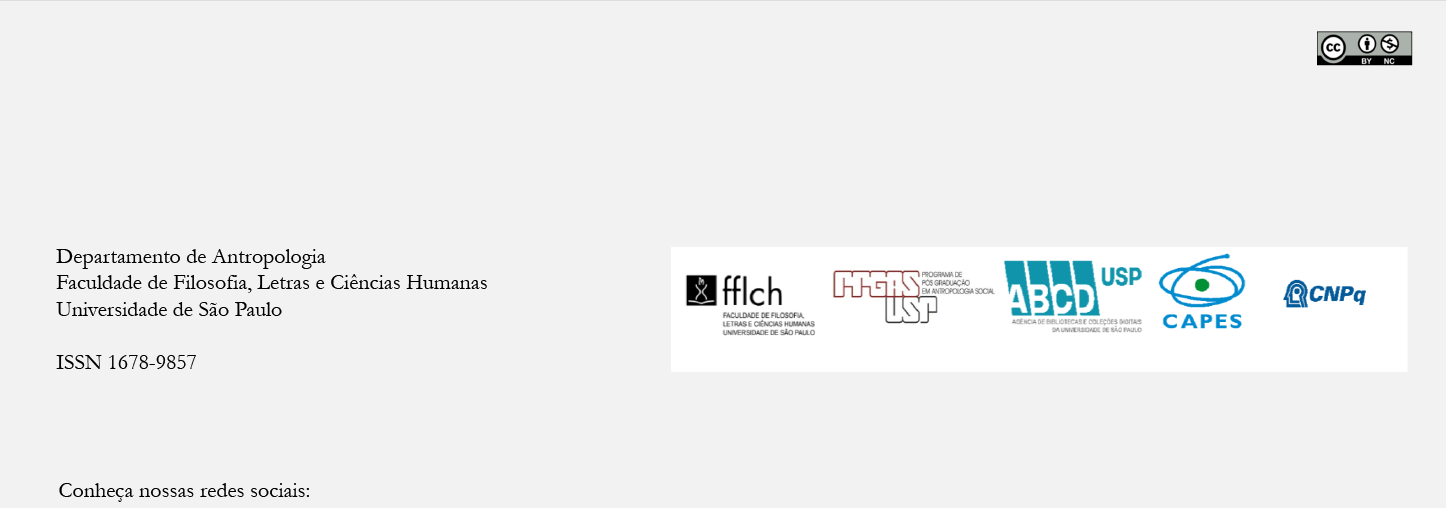Mobilidades e territórios impensáveis. Contranarrativas e afetos de cabo-verdianos nas roças de São Tomé e Príncipe
DOI:
https://doi.org/10.11606/1678-9857.ra.2021.184478Palabras clave:
Mobilidades, contranarrativas, artes culinárias, Cabo Verde, São Tomé e PrincípeResumen
Cabo Verde aparece na memória social e nas práticas de pessoas cabo-verdianas enquanto um território atravessado e costurado pelas mobilidades a outros territórios, desde Europa, Américas e África. Dos vários territórios possiveis, São Tomé e Principe foi e continua sendo narrado como um território impensável. As multiplas narrativas elaboradas sobre os cabo-verdianos em São Tomé e Principe, quer os que experimentaram o acontecimento do trabalho contratado, quer os descendentes dessa experiência atroz, foi inscrita numa chave de regime depreciativo, criando nesse processo de produção de verdades, tentativas de silenciamento de vidas e narrativas que não importam. Em recusa, esse coletivo mostra como, no seu quotidiano, cria múltiplas contranarrativas reversas às narrativas hegemónicas, sinalizando não somente que não cabe nessa história narrada e, que ainda se narra, como também vidas foram construídas. E, as artes culinárias constituem, também, um desses lugares onde tais contranarrativas são elaboradas.
Descargas
Referencias
ANDRADE, Elisa Silva. As ilhas de Cabo Verde da «Descoberta» à Independência Nacional (1460-1975). s/d. París, Editions L’Harmattan.
CARREIRA, António. 1977. Classes sociais, estruturas familiares e migração em Cabo Verde. Lisboa, Ulmeiro.
CARREIRA, António. 1983. Migrações nas Ilhas de Cabo Verde. 2ª edição. Lisboa, CEE/ICL.
CARREIRA, António. 1984. Cabo Verde: aspectos sociais, secas e fomes do século XX. Lisboa, Ulmeiro.
DOS ANJOS, José Carlos Gomes. 2006. Intelectuais, literatura e poder em Cabo Verde: lutas de definição da identidade nacional. Porto Alegre, UFRGS editora.
ÉVORA, Iolanda e GRASSI, Marzia (org). 2007. Gênero e Migrações cabo-verdianas. Lisboa, Instituto de Ciências Sociais da Universidade de Lisboa (ICS).
FERNANDES, Gabriel. 2002. A diluição da África: uma interpretação da saga identitária cabo-verdiana no panorama político (pós) colonial. Florianópolis, Edufsc.
FOUCAULT, Michael. 2013. Arqueologia do Saber. Rio de Janeiro, Forense Universitária.
FURTADO, Claúdio. 1987. Génese e Reprodução da classe dirigente em Cabo Verde. Praia, ILCD.
GÓIS, Pedro e MARQUES, José Carlos. 2008. “Práticas transnacionais dos imigrantes cabo-verdianos em Portugal”. In GÓIS, Pedro (org.). Comunidade(s) cabo-verdiana(s): as múltiplas faces da imigração cabo-verdiana. Lisboa, ACIDI, pp. 87-104.
SILVEIRA, Onésimo. 1968. Consciencialização na literatura cabo-verdiana. Lisboa, Edição Casa dos Estudantes do Império.
TROUILLOT, Michel-Rolph. 1995. Silencing the Past: power and the production of history. Boston: Beacon Press.
VIEIRA, Henrique de Santa Rita. 1951. “Mão de obra cabo-verdiana para S.Tomé”. In: Cabo Verde. Boletim de Propaganda e Informação, Praia, Ano II, n.º 23: 29-32.
MATERIAIS CONSULTADOS
ADICHIE, Chimamanda. 2009. The danger of a single story. TedGlobal, 2009. Disponível em: <http://www.ted.com/talks/chimamanda_adichie_the_danger_of_a_single_story>. Acesso em outubro de 2012.
CARDOSO, Domingos. 2010. “Pelas roças de São Tomé e Pincípe: do nunca visto ao nem visto”, Jornal A Nação, CXXXVI, pp. 23-27.
Código do Trabalho Rural do Ultramar Cabo Verde (27/04/1962).
Decreto-Lei de 1903. Boletim Official, São Thomé, IX.
Descargas
Publicado
Número
Sección
Licencia
Derechos de autor 2021 Revista de Antropologia

Esta obra está bajo una licencia internacional Creative Commons Atribución 4.0.
Autores que publicam na Revista de Antropologia concordam com os seguintes termos:
a) Autores mantém os direitos autorais e concedem à revista o direito de primeira publicação, com o trabalho simultaneamente licenciado sob a Licença Creative Commons Attribution que permite o compartilhamento do trabalho com reconhecimento da autoria e publicação inicial nesta revista.
b) Autores têm autorização para assumir contratos adicionais separadamente, para distribuição não-exclusiva da versão do trabalho publicada nesta revista (ex.: publicar em repositório institucional ou como capítulo de livro), com reconhecimento de autoria e publicação inicial nesta revista.
c) Autores têm permissão e são estimulados a publicar e distribuir seu trabalho online (ex.: em repositórios institucionais ou na sua página pessoal) após o processo editorial, já que isso pode gerar alterações produtivas, bem como aumentar o impacto e a citação do trabalho publicado (Veja O Efeito do Acesso Livre).




